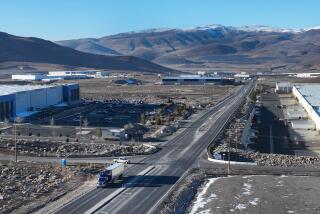U-Haul Arrivals May Signal Valley Economy’s Recovery
- Share via
VAN NUYS — Just a few years ago, it seemed that people couldn’t get out of the San Fernando Valley fast enough. First, the recession struck. Then the 1994 Northridge earthquake. Businesses and residents alike were packing up and moving on.
But as the economy has recovered, so has the Valley’s appeal, apparently. Last year, Van Nuys was the ninth most popular destination in the country for people who rent U-Haul trucks and trailers, according to U-Haul International Inc.--up from No. 11 in 1997.
That puts Van Nuys ahead of such cities as Las Vegas, Seattle, Portland, Ore., and Phoenix, said Johna Burke, media relations director for Phoenix-based U-Haul.
Even so, managers at three U-Haul outlets in Van Nuys say that despite all the people coming, still more are going.
“We’ve had many rentals to Las Vegas and Northern California,” said Carey Chrisman, who runs a U-Haul business and carwash with his father on Van Nuys Boulevard. “For every three trucks we send out, one comes back in.”
U--Haul said it does not track most popular departure points. But economist Jack Kyser of the Economic Development Corp. of Los Angeles County offered an explanation for the large number of both arrivals and departures.
The arrivals, he said, stem from the area’s economic recovery.
“During the the height of the recession, Los Angeles County had a large population erosion,” Kyser said.
That has now changed, he said, and as a result, people are moving back to the Los Angeles area for jobs in motion pictures, computer software and other new media as well as international trade and tourism.
Adding to the area’s luster are low unemployment, falling crime rates and the Southern California climate.
As for people leaving, Kyser said Van Nuys and other population centers in Los Angeles County “tend to be the first stops when people arrive in Southern California.” But after people settle in, they move to other Southland communities, he said.
“So there’s this constant churn that goes on,” he said.
More to Read
Inside the business of entertainment
The Wide Shot brings you news, analysis and insights on everything from streaming wars to production — and what it all means for the future.
You may occasionally receive promotional content from the Los Angeles Times.










